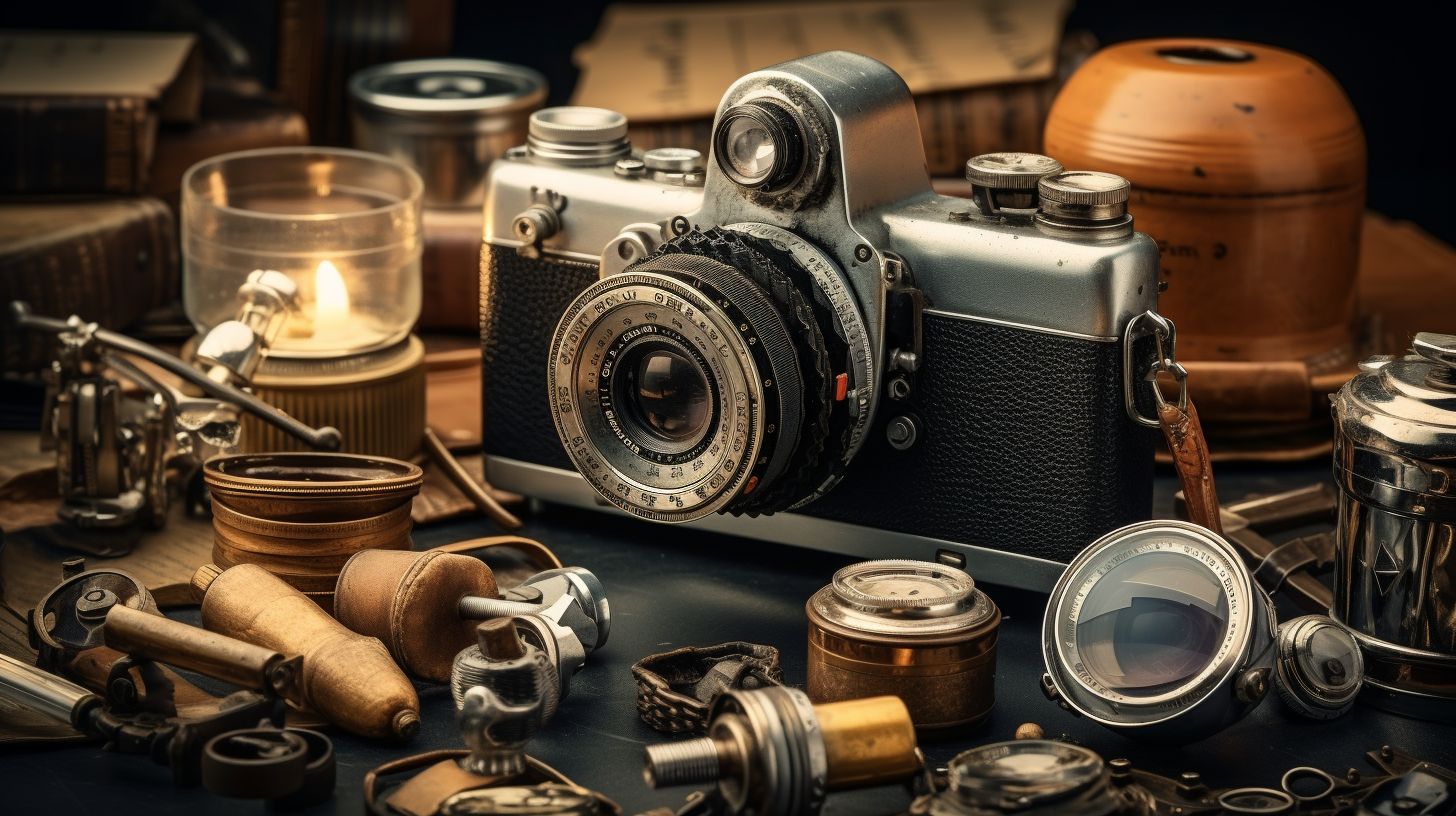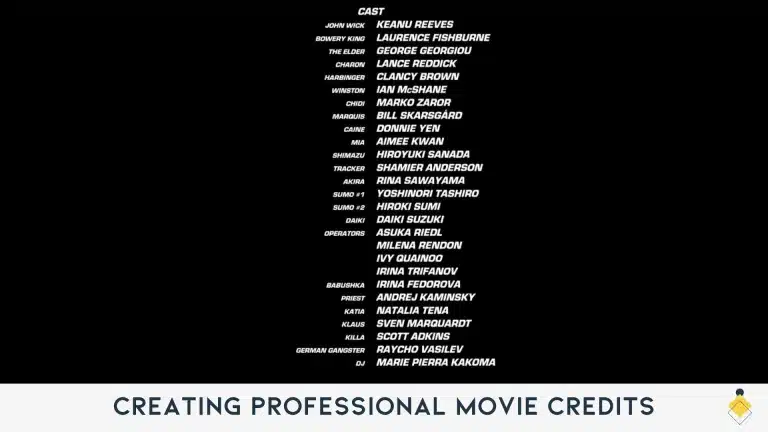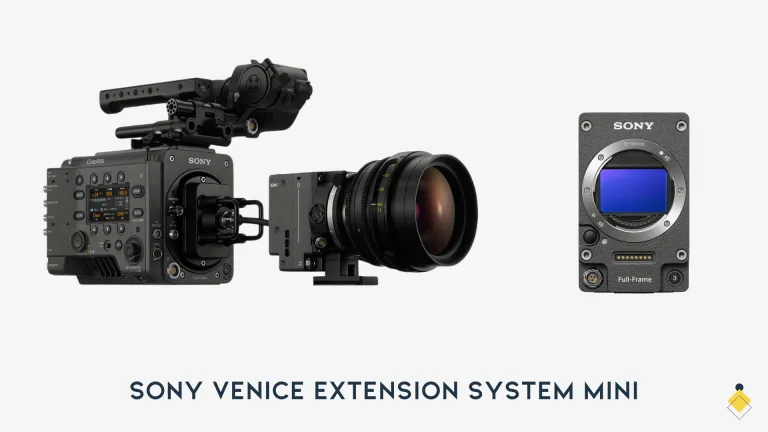Ever wondered about the evolution of cameras we use today? The journey from a simple wooden box to high-tech digital cameras has been fascinating. This blog post will provide you with a comprehensive overview of the invention and development of the camera, exploring its rich history from inception to this modern age.
Stay tuned as we take an intriguing ride through the timeline of photography, one click at a time.
The Origins of the Camera
The camera can trace its origins back to the concept of the camera obscura, a simple device that projected an image onto a surface.
Camera Obscura
The Camera Obscura serves as the heart of early photographic developments. Simple in design, this device projects inverted images onto a surface via a tiny hole or aperture – a fundamental principle explained by Han Chinese philosopher Mozi back in the 5th century BC.

As centuries passed, lenses found their way into camera obscuras around 1550 to aid artists with drawing more detailed and lifelike images. Pioneering innovator Joseph Nicéphore Niépce took things one step further by permanently capturing the fleeting projections of a camera obscura using his revolutionary heliography process.
This significant milestone propelled photography forward, directly impacting the creation of daguerreotype – an invention that offered sharp, high-contrast images never seen before.
Early Photographic Cameras
In the quest to capture moments, early photographic cameras were monumental in shaping modern photography. Joseph Nicéphore Niépce played a significant role as he invented the first permanent photograph in 1826 using a wooden box camera.
This was no simple feat; it required an intense eight-hour exposure on pewter coated with bitumen. His successful attempt produced ‘View from the Window at Le Gras‘, marking a critical milestone in the history of cameras.
The early 19th century swept in further advancements and refinements to these initial photographic devices. Improvements aimed for reduced exposure times and more practical methods for capturing and preserving images.
The camera obscura’s utility roots laid firmly within drawing applications dating back to circa 1550, but its true potential came into light when used as an instrument for creating tangible memories.
The Invention of the First Camera
The first camera was invented with the introduction of the first commercial camera and driven by the inventors behind its creation.
The First Commercial Camera
Alphonse Giroux, a Parisian manufacturer and optician, teamed up with his brother Vincent to create the first commercial camera in 1839. Their creation was a daguerreotype camera, designed under the guidance of Louis Daguerre himself – an inventor known for perfecting early photography methods.

The brothers’ camera marked a significant step in making photography accessible to everyday people. This model boasted user-friendly features that made it possible for more individuals to capture moments of their lives on film.
Although rudimentary by today’s standards, this innovative device laid down essential groundwork for modern cameras we use regularly now.
The Inventors Behind the First Camera
Joseph Nicéphore Niépce is celebrated as the creator of the first permanent photograph. Using a sliding wooden box camera, he brought his vision to life in 1826. Louis-Jacques-Mandé Daguerre, another significant inventor, contributed a substantial improvement on Niépce’s technique.
He developed the daguerreotype process that quickly spread throughout Europe and North America. Another prominent figure in early photography was none other than William Henry Fox Talbot – an independent inventor who revolutionized printing with his calotype process that introduced negative prints.
The commercial aspect can’t be forgotten; Alphonse Giroux took responsibility for crafting the first marketed daguerreotype camera in 1839.
Evolution of the Camera
Photographic cameras have evolved significantly over time, with advancements such as daguerreotypes and calotypes, the introduction of photographic film, the emergence of 35mm film, and the creation of iconic cameras like Kodak and Leica.
Daguerreotypes and Calotypes
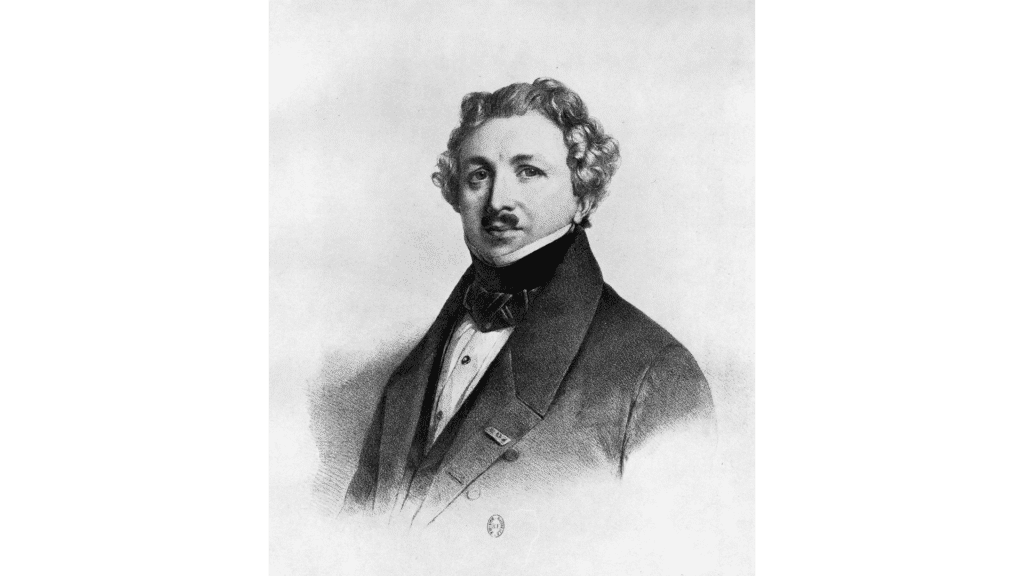
Louis-Jacques-Mandé Daguerre is credited with inventing the daguerreotype, a groundbreaking photographic process that produced high-contrast and sharp images.
On the other hand, William Henry Fox Talbot invented calotypes, which introduced negative printing.
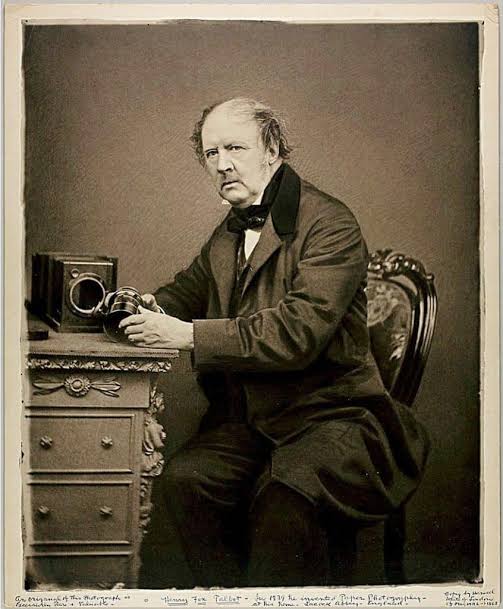
This allowed for multiple copies of an image to be made from a single negative. Both the daguerreotype and calotype processes played significant roles in the early development of photography, paving the way for further advancements in capturing and preserving moments in history.
Introduction of Photographic Film
George Eastman played a pivotal role in the introduction of photographic film. In 1885, he pioneered the use of paper film, which was later replaced by celluloid in 1888. This innovation revolutionized the movie industry and allowed for the development of motion pictures.
Eastman’s introduction of photographic film also made photography more accessible to the general public with his creation of the first Kodak camera. Thanks to this breakthrough, capturing images became easier and more convenient than ever before.
Emergence of 35mm Film
The emergence of 35mm film played a crucial role in the evolution of photography. This smaller format, introduced in the early 20th century, allowed photographers to capture more images on a single roll of film.
It was lightweight and portable, making it easier for photographers to document events and capture candid moments. The introduction of 35mm film also paved the way for the development of compact cameras that were affordable and accessible to a wider audience.
One notable example is the Kodak camera, which used 35mm film and became immensely popular among amateur photographers and the middle class. With its convenience and versatility, 35mm film revolutionized photography by democratizing the medium and enabling more people to participate in capturing memories and telling visual stories.
The Kodak Camera
George Eastman introduced the Kodak camera in 1888, revolutionizing photography. This camera was the first to use roll film, making it easier and more convenient for photographers.

It featured a fixed focus lens and a single shutter speed, simplifying the process for amateurs. With the introduction of the Kodak camera, snapshot photography became accessible to everyone.
Its success catapulted the Kodak company into becoming a leading manufacturer in the photography industry.
The Leica Camera
The Leica Camera, developed by Leica in 1925, revolutionized the handheld camera market. Its thin and lightweight design made it highly popular among photographers. The Leica camera was the first to introduce interchangeable lenses and modern viewfinders in the 1930s, setting new standards in photography.

With its advancements and contributions to camera technology, the Leica camera played a significant role in shaping the evolution of photography as we know it today.
The Arrival of Color Film
Color film arrived with the development of two processes known as the Joly Process and the Autochrome Process.
The Joly Process
Dr. John Joly invented the Joly Process in 1894 to improve color reproduction in photographs. This innovative method involved using a three-colored filter screen that was placed in front of the camera’s plate when taking a photo.
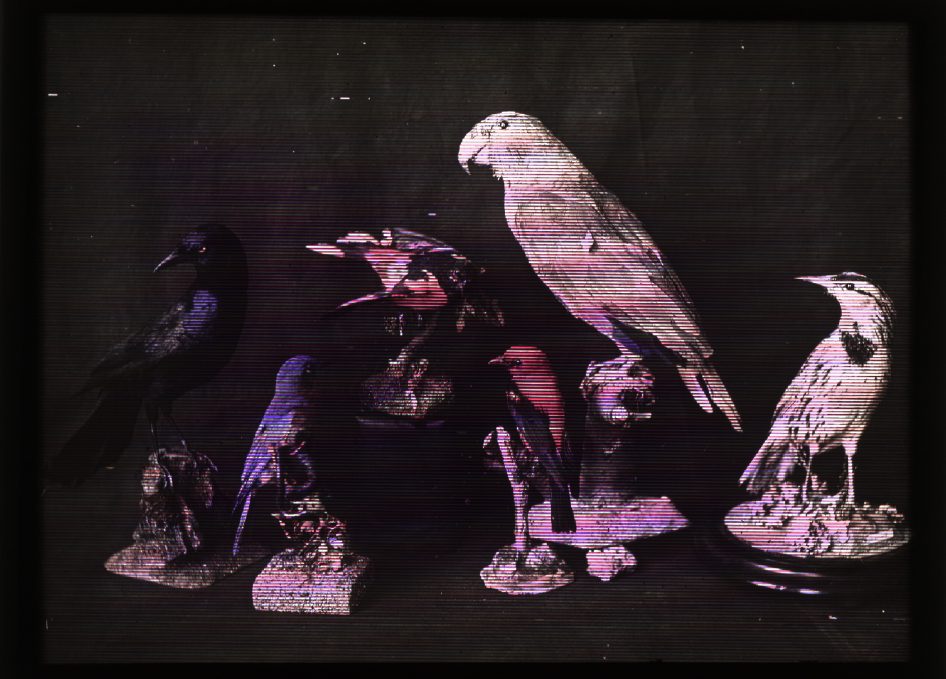
The Joly Process made its commercial debut in 1895, but it faced challenges with poor color sensitivity, resulting in unsuccessful images. Despite these setbacks, it contributed to ongoing efforts during the late 19th and early 20th centuries to enhance color photography.
The Autochrome Process
The Autochrome Process, developed by Louis and Auguste Lumière in the early 20th century, revolutionized color photography. It was the first commercially viable technique for capturing vivid and realistic colors in photographs.

The process involved using a glass plate coated with a silver emulsion, onto which a mosaic of tiny potato starch grains dyed in red, green, and blue was applied. These grains acted as color filters that allowed light to pass through and create the final image.
Thanks to the Autochrome Process, photographers could now capture the world around them in vibrant color, bringing a new level of realism to their work.
The Advent of Video
Video cameras revolutionized the way we capture and preserve memories, with the first video camera making its debut in the mid-20th century.
The First Video Camera
Louis Le Prince is credited with inventing the first video camera in 1888. His camera utilized a single lens and paper film, allowing it to capture footage at a speed of 16 frames per second.
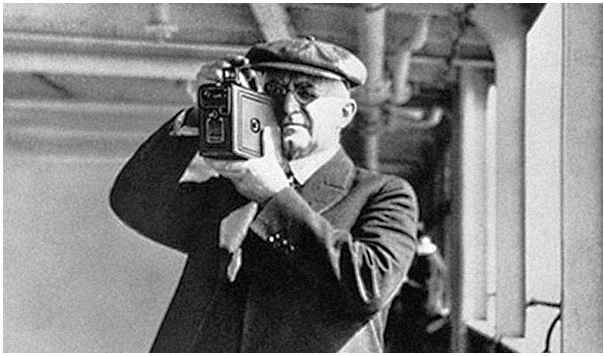
In October of that year, Le Prince recorded the first-ever video footage using his camera, which was titled “Roundhay Garden Scene.” It’s worth noting that Le Prince’s invention predates the motion picture cameras developed by Thomas Edison and the Lumière brothers.
The Race for the First Video Camera
Étienne-Jules Marey and Thomas Edison were pioneers in the race to create the first video camera. In 1882, Étienne-Jules Marey invented a camera capable of capturing 12 images per second, laying the foundation for motion picture technology.
Meanwhile, Thomas Edison was also experimenting with moving pictures and developed his own version of a motion picture device known as the Kinetograph. These early advancements paved the way for future innovations in video recording and set the stage for the development of modern cameras.
The Digital Revolution
During the digital revolution, significant advancements were made in camera technology, leading to the invention of the first digital camera and paving the way for modern photography.
The First Digital Camera
The first digital camera was created by Steven Sasson in 1975. It weighed 8 pounds and had a resolution of 0.01 megapixels. Using a CCD sensor, the camera captured images that were recorded onto a cassette tape and displayed on a television.

However, this groundbreaking invention was not commercially available at the time.
Sasson’s First Proper Digital Camera
Steven Sasson developed the first proper digital camera in 1975. This camera played a significant role in the digital revolution. It was capable of capturing black and white images, which were then stored onto a cassette tape.
The invention of this digital camera marked a major milestone in photography history, as it laid the foundation for the development of modern-day digital cameras that we use today.
Developments in the 1980s
The 1980s marked a significant turning point in the history of cameras with the advent of digital imaging technology. One notable development was the creation of the first digital camera prototype by Steven Sasson in 1975.
However, it wasn’t until 1990 that the Dycam Model 1 became commercially available, making it the first digital camera accessible to consumers. These advancements paved the way for further innovations and set the stage for an entirely new era in photography.

The digital revolution in the 1980s laid a solid foundation for future developments and changed how we capture and share moments forever.
The Modern Era
In the modern era, digital single-lens reflex cameras (DSLRs) have become popular among professional photographers for their advanced features and high-quality images. Camera phones have also revolutionized photography, making it more accessible to the masses with their convenience and improved image quality.
Digital Single-Lens Reflex Cameras (DSLRs)
DSLRs, or Digital Single-Lens Reflex Cameras, have become incredibly popular in the modern era of photography. These cameras offer a range of advanced features and superior image quality compared to film cameras.
One key advantage of DSLRs is that users can see the exact image recorded on the digital sensor through the viewfinder, allowing for precise composition and adjustments. Additionally, DSLRs are highly versatile and cater to both hobbyists and professional photographers.
They include features like light meters and easily adjustable settings for shutter speed and aperture sizes, giving photographers greater control over their images. Overall, DSLRs have revolutionized photography by combining the convenience of digital technology with the flexibility and capabilities of traditional SLR cameras.
Camera Phones
Camera phones have revolutionized photography with their convenience and portability. The first camera phone, the Kyocera VP-210, introduced in 1999, featured a 110,000-pixel camera and a color screen.
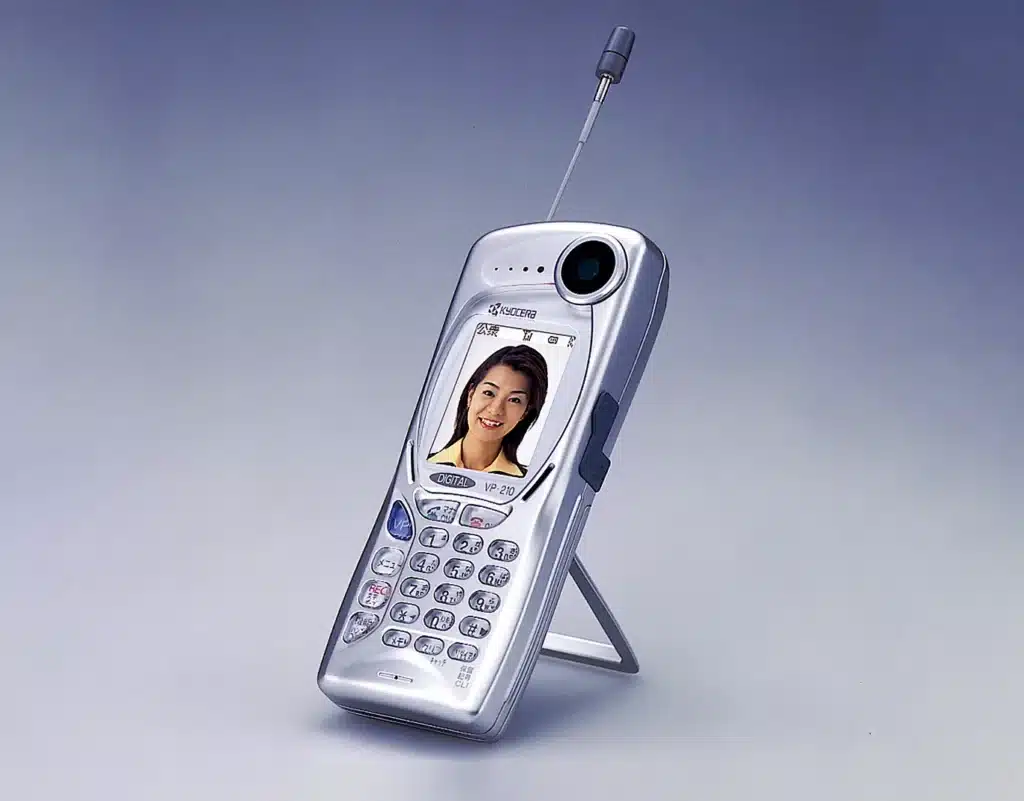
These devices allow for instant capture and sharing of photos, making them immensely popular among users. Camera phones have had a significant impact on various industries like journalism by enabling quick image capture and sharing from the scene.
With their ability to provide easy access to photography on the go, camera phones have changed the way we document our lives and share memories with others.
Conclusion
The invention of the camera has revolutionized the world of photography. From the humble beginnings of camera obscuras to the development of daguerreotypes and calotypes, photographers have continuously pushed the boundaries of technology.
Today, we enjoy the convenience and power of digital cameras and smartphone cameras that capture memories with ease. The first camera may have been invented centuries ago, but its impact on our lives continues to shape how we see and document the world around us.
FAQs – When was the First Camera Invented
The first camera, as we know it today was invented by Nicephore Niepce in the 1600s.
Thomas Gregory created the Roll Film Camera, which used a spool of transparent plastic film to capture multiple images.
Edwin Land brought instant photography to life through his invention – The Polaroid Camera.
Artificial Intelligence technologies have greatly impacted modern-day cameras like the iPhone 15 by introducing automatic photo editing and facial recognition features.
Willard S. Boyle and George E. Smith are inventors known for developing charged-coupled devices (CCDs) that were widely used in early digital cameras.
Companies such as Nikon, Canon, Fuji, and Sony have been pivotal in advancing photographic equipment from Single-lens Reflex Cameras (SLRs) right up to today’s DSLR and mirrorless models capable of producing high-resolution images.

